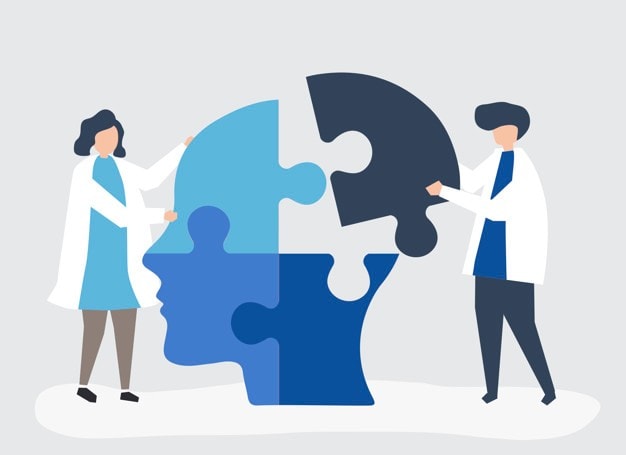Information processing, as the name suggests, is about processing information in a manner that is noticeable to an observer. It is a method that allows the gathering, recording, observing, displaying, salvaging and spreading of valuable information.
Table of Contents
What is Information Processing?
In cognitive psychology, information processing is described as an approach taken to understand human thinking in terms of how it can process the same type of information as computers. It puts its onus on specific aspects of memory retrieval and encoding and discusses the various mechanisms via which learning occurs
The term information processing is applied to computer-based operations. It refers to a process where the digitalized information is manipulated by a digital electronic machine, for instance, a computer. The information processing system includes
- Business software
- Computers
- Operating systems
- Mainframes
- Networks
Whenever the information and data need to be managed or transferred, the method is then known as information processing. The processor first processes the information and later provides understandable results.
Did you know how rapidly information processing technologies are advancing?
By 2025, the global datasphere is projected to reach 175 zettabytes, up from 33 zettabytes in 2018, highlighting the exponential growth in data that necessitates efficient information processing systems (Source: International Data Corporation, 2018).
Artificial Intelligence adoption has tripled between 2018 and 2019, with 37% of organizations employing AI to enhance information processing and decision-making processes (Source: Gartner, 2019).
Characteristics of information processing
Information processing is described as a process that can change information into a meaningful form. It is considered significant and useful only if it has the following characteristics-
1. Accurate
If the information is accurate, it will have a direct impact on the decision-making process. Hence it is essential to remove any possibility of errors
2. Timely
The information must be available as per the need of the hour because a delay in obtaining it can make the information useless
3. Complete
The information has no meaning until and unless it is finished because incomplete data and information can lead to incorrect results
4. Comprehensive
Only comprehensive information is useful, and if it is not so then it is considered useless for the receiver and thus has no real meaning and worth
The concept of information processing has been in existence for a very long time. Governments and business entities used to process a large amount of information from the gathered data.
In the current scenario, the capability to process information has reached new heights and gigantic proportions. It is possible to process trillions of bytes every minute by an equal number of devices, satellites and software applications.
Types of information processing
There are two types of information processing, and these are as follows-
- Vertical information processing
- Horizontal information processing
These can be either decentralized or centralized.
Underlying assumptions of information processing
The information processing concept is based on several assumptions like
- The available information is processed by a series of processing units like short-term memory, perception, and attention
- It is the function of the processing system to alter or transfer the collected information in a systematic manner
- Information processing aims to offer details about the structure and processes that motivate performance
- Information processing in human beings to a great extent resembles that of computers
4 Steps of information processing
In the context of computers, the information processing system has four different stages for instance input, output, storage, and processing but in some devices that are used for processing information only three of the steps are used and one of the storage is left out as it is perceived to have no additional benefit or use.
All the stages of information processing have a vital role to play in the scheme of things for instance, in actions like the collection, distribution, and analysis performed by a computer system. The steps are described below
1. Input processing
The function of an input device is to gather data at the point of measurement or the source. The human body enters data into the system through various sources like a microphone; keyboard and another part of the body for instance eye movement.
There are other forms of input devices for instance clocks, sensors, and thermometers. In some cases, the input processing stage is also referred to as the encoding stage. It is a fact that you have to enter data into a system so that it can be processed into either information output or stored data.
The input processing stage is the first stage of the IPOS model and it is the means through which data can enter a system. This stage is further sub-divided into three phases which are
- Collection
- Preparation
- Input
2. Data processing
Data processing can be both small and straightforward to complicated and broad and to a great extent, is dependent on the data that is stored. The objective of this stage on the IPOS system is to transfer the raw data that one has input into a form that can be stored and used at a later date.
This data processing information provides information output that is used later for interpretation or further processing. As soon as the data enters the IPOS model by the input device, it is processed into either stored information or stored data.
In this case, the processing agent is either firmware or software that includes a particular action plan on a typical type of data. The processing unit is active even before someone enters the data and related information in the desktop or portable computer and it is common for the processing software to request specific data and offer a guiding hand to the input process.
3. Output processing
The term output generally signifies a graphic, a printed document or a display on the monitor screen or even coding, information or data. The function of the output processing in the IPOS system is about forwarding data to a printer, display screen, speaker or a plotter or to some other medium or device that a person can easily interpret and understand.
In this stage, it is possible to store data into a new format or take the processed data and change it into an input to a different IPOS module.
4. Storage processing
This is the storage processing stage in the IPOS system, and it occurs directly to and from the output or the processing stages. It usually stores data either for later use or for recalling data that was saved earlier so that it can now be processed as new data from the input stage.
The output processing can store information or data on a fixed storage medium, for instance, hard disks as well as removable media like DVD, CD-ROM and flash drive.
Steps of information processing in psychology
Psychologists have been putting their onus on the fact that a human brain and a computer process information and operate on a nearly comparable basis. Comparisons have naturally been made to identify the way information is received, stored and distributed in both the human mind and a computer.
There are four steps of information processing. These are described below as
1. Attending
The first stage of information processing is attending; in this stage, a person pays close attention to the information by putting all the focus on the words or data. This way it opens itself to receive the valuable information
2. Encoding
The second stage of information processing in psychology is encoding. This is the stage where a person processes the information it has gathered and encodes it for future usage
3. Storing
The third stage of information processing in psychology is storing. In this phase, the critical information is stored in the memory banks so that it can easily be retrieved when required at a later stage
4. Retrieving
The last and final step of information processing is retrieving. In this phase, the necessary data and information can be easily retrieved from the memory banks and use it as per the need and requirement.
Stages of memory for information processing
There are three main stages of memory that work together. These are
1. Sensory memory
This is the initial stage where the senses pick up clues from the environment and bring it up in the memory for screening and processing. The sensory memory perceives and deals with information via its five senses or incoming stimuli.
The sensory memory deals with all the information and decides which information is important enough to keep and which to discard. Remember the capacity and duration of sensory memory is minimal as it can handle only 3 – 7 units at a single time for just 1 – 3 seconds before the human brain forgets it.
2. Short-term memory
This is the second stage of incoming information and holds a limited amount of information for a specific period. It is often known as working memory and helps in planning certain aspects of life. The information that is deemed necessary finds its way into the working memory, which offers a temporary haven for storing and manipulating the information that needs to be processed.
Then the brain groups information so that it becomes easier to handle. The capacity and duration of short-term or working memory are on an average of 7 chunks for 5 – 15 seconds before it is forgotten. This is where the working memory starts its job via the process of rehearsal. It refers to the manipulation of information in working memory. There are two types of rehearsal which one can use for his benefit.
With the help of maintenance rehearsal, the idea should be repeated continuously to store it in the working memory. The second is an elaborative rehearsal, where a definite meaning is attached to the information and the storage now becomes more efficient.
3. Long-term memory
This is the long-term memory where the received information becomes implanted in the memory banks. The best part is that there are no limitations on the type and amount of information you want to store here for present or future use.
In some cases, a person is not even aware of the exact information that is stored over here because of its vastness. The capacity of storage is infinite and duration permanent. An important fact to take into consideration at this stage is that a person can retrieve and access the information that has been previously stored and bring it back to working memory so that it can be once again processed.
Tools used in information processing
Information processing is a collective term that refers to multimedia processing or business processing applications. The data processed include texts, graphics, videos, and audios. The various tools that are required in information processing are as follows-
1. Database
It is considered one of the essential tools that are used to store, manage, process and effectually retrieve information. The database is often called a structured collection of information. The common types of database are a hierarchical, flat model, relational and network
2. Search engine
It is an information processing tool that can retrieve required data from the databases
3. Server
The term server refers to a PC and includes both hardware and software. It is possible to share files on a server within a network
4. Accounting information systems
This tool provides statistical reports and financial accounts to help in the decision-making process. It is essential for internal management as well as external parties like taxation and regulatory personnel
5. Geographic information systems
Another tool used in information processing is a geographic information system that includes software and hardware that retrieve, analyze, manage and store geographic information. It includes both the stored data and the operating personnel
6. Enterprise systems
The enterprise systems are essential information processing tools that use identifiers in their application to integrate stored data from one enterprise system to other such systems.





